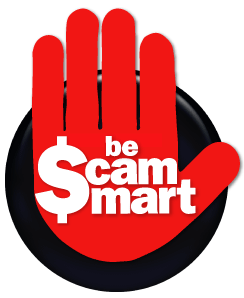]]>
In summary, Pyramid systems (cash only with NO goods) are illegal and is considered a scam.
MLM is OK as they do include products to sell. It is just another way
of marketing, and could be quite effective as we can see in some of the
fast expanding global companies. The products in MLM often includes
health products, household items, cosmetics, that are expendable or
contains expendable components (e.g. a coffee filter in a
coffee-maker), so as to encourage monthly/quick repeated sales.
However, the price of MLM products are often a notch above common
brands you find in the supermarkets. MLM companies and marketeers often
have to reinforce the value of the product together with the strong
marketing plan. I generally find that MLM is a good way to market
products – the only problem we normally face is the way some persistent
marketers are “pushy” about their sales target and dream of “total
passive income” and “free luxurious vacations”.
Internet forced matrix systems are acceptable provided they also
include products as part of the return of investment. It is Not OK if
there is only cash flow with no products in question. In most cases
even if there are products in a matrix system, they are often digital
goods (ebooks, etc) that are not… quite useful. It would often make
better sense to invest in MLM as users will receive useful tangible
products in return but at a slightly higher price in most cases. Online
games (esp. those MMORPG) would probably benefit very well if they
would apply the matrix system. Just a tip.
For those who are new to these systems, you can read the explanation from Anna.
—————–
By Anna-Marie Stewart
Have you ever wondered what the difference is? MLM operators
claim they’re not operating a pyramid scheme. Matrix and “forced
matrix” operators claim that what they have is better than MLM. So what
are the differences?
Pyramid Schemes:
Pyramid Schemes are
illegal in the USA, and probably abroad. We all know how these schemes
work, or at least get the jist of the idea. A person (the originator)
starts by sending a message to several people. Usually people he/she
knows. The message in some round about way, will tell everyone to send
him $5 or so…and then send the message to someone else. All the while
adding names to the list, and each new recipient must send money to the
first person, second person…etc
There are a million variations
of the Pyramid Scheme, but the main attribute that define a pyramid
scheme ( also known as chain letter) is that there is no product, it’s
just people sending money. The term “Pyramid Scheme” is derived from
the fact that it starts with one and the size of those involved
increases as you move towards the bottom. On paper, it looks like the
shape of a triangle, or pyramid.
Multi Level Marketing:
How
is MLM different from a pyramid scheme? After all, on paper any MLM
looks like a pyramid in reality right? The differences are very simple.
In MLM there is a product being sold. Income is generated from
“commissions”. It’s actually a pyramid scheme, except that the
participants get something back…regardless of whether the people they
refer actually pay for something…
In MLM, the participant
always gains from their investment. The catch is in the value of the
product that the participant receives. This is the reason that MLM is
so big on the internet. Because, information can have a monetary value,
and it cost the distributor nothing. So ebooks, software,
newsletters…etc… these are the most common products used in MLM.
MLMers have added tangible products as well, and home products were the
first to use MLM as a primary marketing strategy.
The Forced Matrix:
With
so many MLM programs on the market these days, originators have tried
to make their programs more desirable than others. Hence the forced
matrix idea. In a regular MLM program, your monetary gains are based
entirely on how good you are at marketing the program. However, most
people arent’ very good. So it would benefit the less talented if they
had help from the talented. Basically, if the number of people who can
join under you is limited in any way…then it’s a forced matrix. The
idea being, anyone else you refer extra..will go under someone else.
The best implementations put the extra person under one of the people
YOU have under YOU. Hence it helps the person under you, which helps
you too.
The term is tossed around a bit, and sometimes not used
at all. However, that is what defines a forced matrix. Sometimes
numbers are used to describe a forced matrix more thoroughly….like “4
X 4 forced matrix” for instance. Which might mean that you can only
have 4 people directly under you and only 4 people under those 4 who
you recieve commissions from.
There is a hi-bred idea that has
become common now, where by a person can deliberately place a referral
in another line of their choice. A sort of traffic control attribute
that helps originators get their referrals interested. This has been an
attempt to make regular MLM more appealing, and it has worked. In fact,
forced matrix MLMers have even implemented the option in their own
programs.
The benefits of either are about equal. With a forced
matrix, you stand to earn an income faster, but increases in income are
slower because your referrals get forced further down the line from
you. With regular MLM you have a stronger base, and sustaining it is
generally easier…but first profits can be slow. If you want a little
income faster, go with a forced matrix. If you want BIG profits and are
willing to work a long time for it, go with regular MLM programs.







